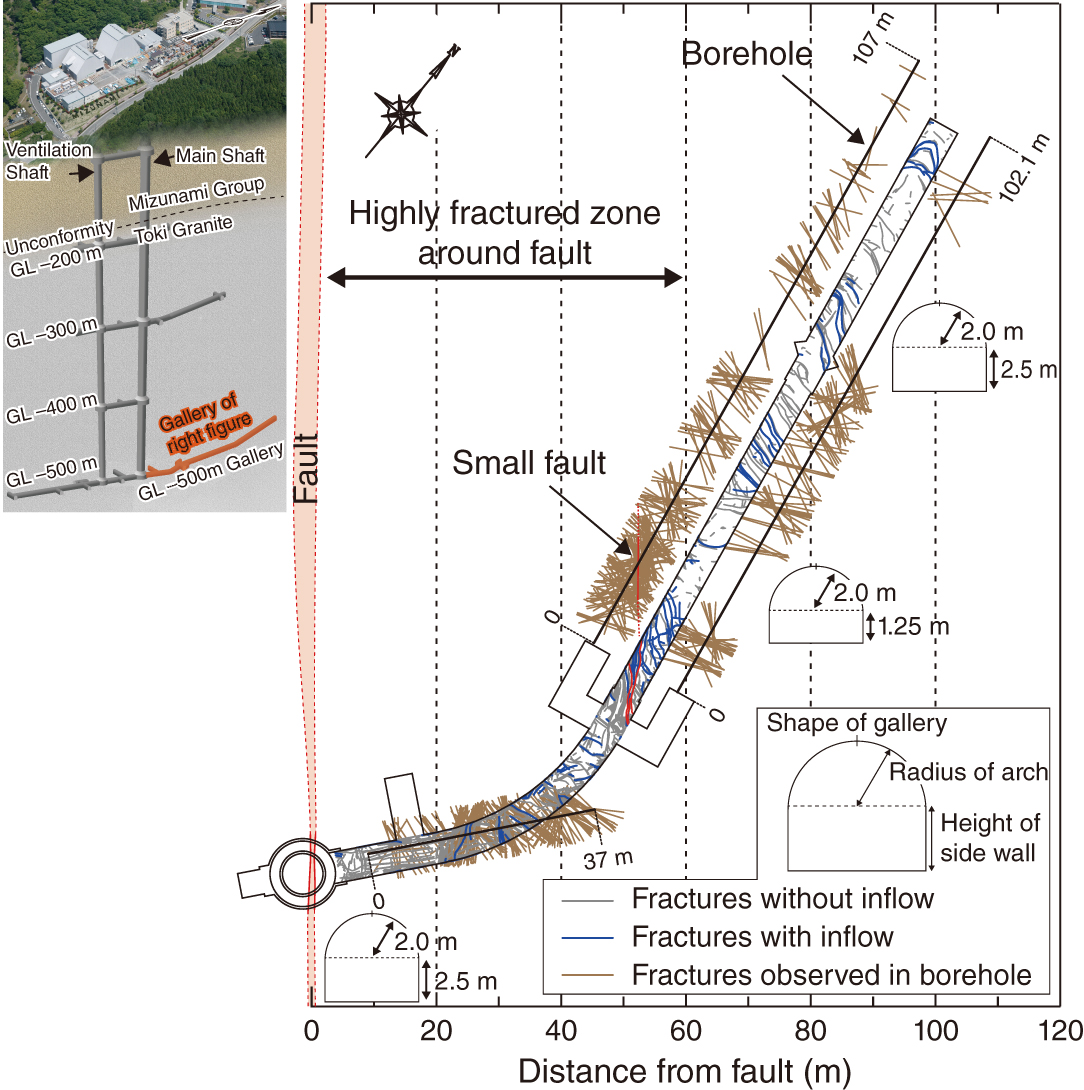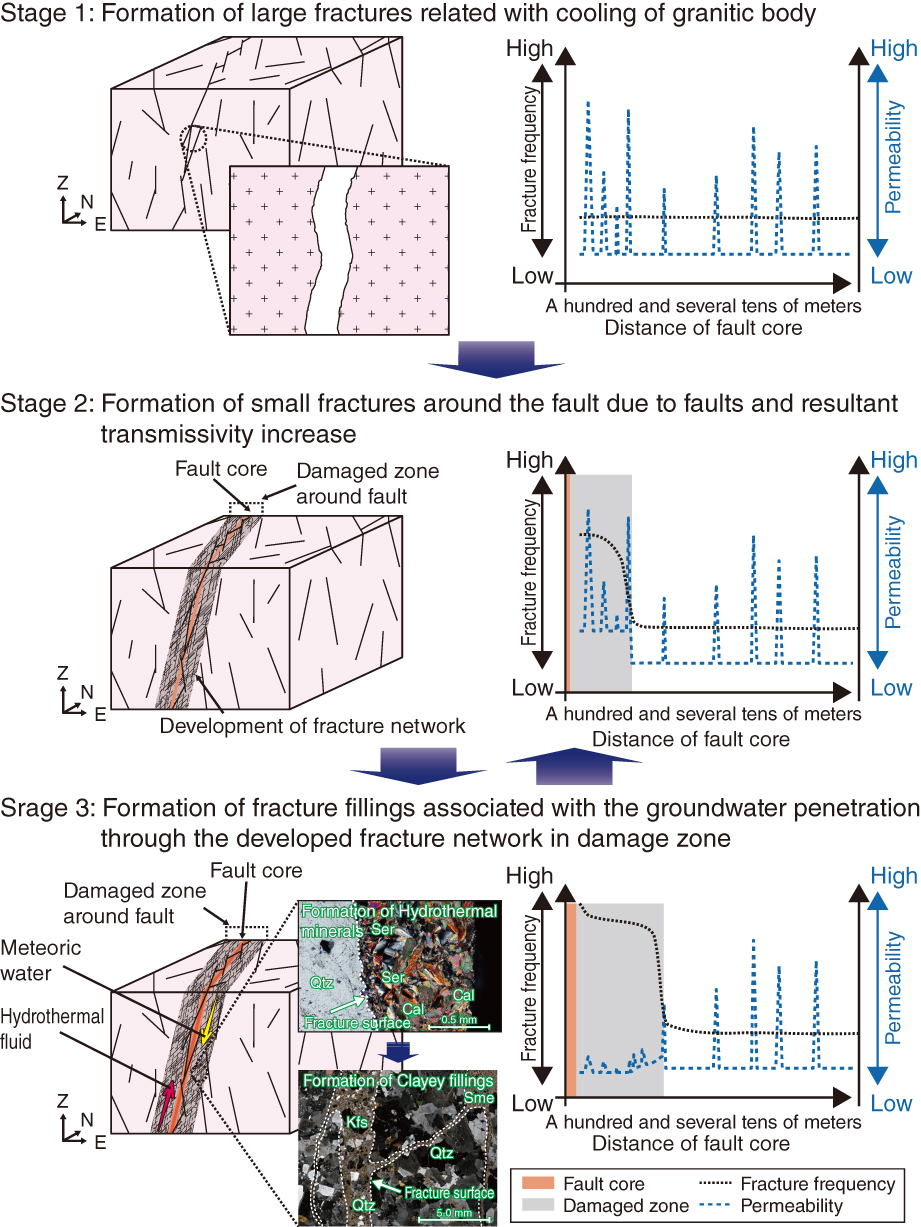
Fig.8-9 Fracture distribution at the GL –500 m gallery and layout of the Mizunami Underground Research Laboratory

Fig.8-10 Long-term behavior of hydrogeological structures around faults
Understanding long-term groundwater flow is critical to assess the safety of geological disposal of high-level radioactive waste (HLW). Fractures in crystalline rock, such as granite, function as pathways for groundwater flow. Characteristics of fractures have the potential to change due to faulting and/or formation of fracture fillings. The dynamic behavior of hydrogeological structures around faults has therefore been studied at 500 m below ground level (GL) in the Mizunami Underground Research Laboratory (Fig.8-9).
Detailed borehole and gallery-wall investigations indicate that there are three stages in the development of hydrogeological structures (Fig.8-10). The first stage is characterized by the formation of relatively large primary fractures after the temperature of the granite pluton has decreased through the ductile-brittle transition and is subjected to brittle-deformation conditions. Collectively, these primary fractures act as the primary pathway for groundwater. The second stage is associated with faulting of the pluton and formation of a damage zone containing relatively small fractures, which act to increase the hydraulic permeability. The third stage is marked by a decrease in the hydraulic permeability of the damage zone caused by the precipitation of secondary minerals, typically including sericite, chlorite, and calcite, from the infiltration of reactive groundwater. As much as 90% of fractures can be sealed in this manner. Additionally, unconsolidated clayey fillings, which are formed by injected under high-pressure pore water associate with fault reactivation, can act as a natural grout material. These fillings are a unique feature of active orogenic fields found in the Japanese islands.
The underground environment has the potential to decrease the hydraulic permeability of fractures and faults in the long term by a natural “self-sealing function”. Processes that contribute to this function include the precipitation of minerals from infiltrating reactive groundwater and the injection of material under high pressures associated with fault reactivation. These processes are considered favorable for the geological disposal of HLW in the active orogenic fields of the Japanese islands.